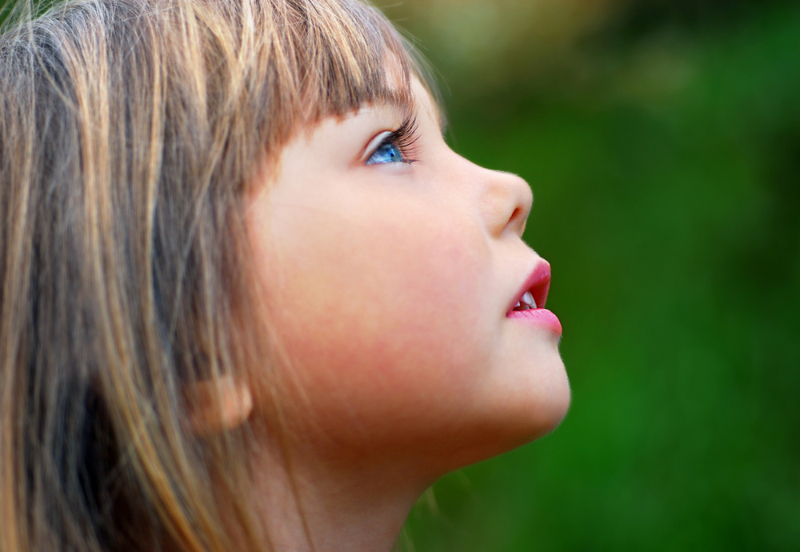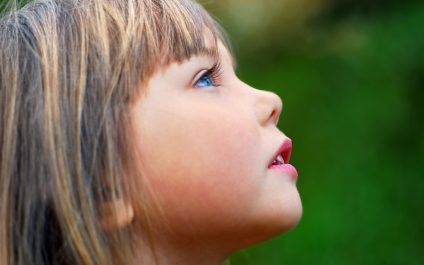
The benefits of mindful behaviour are many and according to respected psychologist and author, Karen Young, the sooner we can practice mindful behaviour with our children, “the greater their capacity for mindful presence will be”. In this blog, Karen gives us 11 practical steps for building mindfulness in our children. Read more
Mindfulness has an extraordinary capacity to build a strong body, mind and spirit in ourselves as adults, as well as in our children. Science has told us that it can help to protect against stress, anxiety, depression, illness and pain, ease the symptoms of autism and ADHD, improve academic performance and social relationships, as well as expand the capacity to experience positive emotions.
Mindfulness is about stepping back and seeing thoughts and feelings come and go, without judgement, but with a relaxed mind, fully focussed on the present moment.
Children are wonderfully present in what they do, but as life picks up speed, the capacity to experience that calm, strengthening stillness can become more difficult to access. The sooner we can encourage the little people in our lives towards mindfulness, the greater their capacity for mindful presence will be. A regular mindful practice will ensure that existing neural connections are strengthened and new ones established.
Mindfulness for children generally works best it’s kept to about five minutes or less. Of course, if they’re able to go for longer, brilliant – go with that. Ready to play?
- Mindful Breathing.
Get your kiddos into a comfy position and ask them to close their eyes. Next, ask how their breath feels as they draw it into themselves, and then as it leaves. If they put a hand on their belly, they’ll be able to feel the rise and the fall of their breath. Do this about five times – five inhales, five exhales. After five breaths, guide them to any thoughts and feelings they might be aware of, then invite them to let go of those thoughts and feelings. Ask them to imagine that the thoughts and feelings are bubbles, floating away, as they return to their breathing. Repeat the five breaths – five in, five out – and do this as many times as feels right.
-
Thought Clouds.
This is a slightly different take on the above exercise. When your mindful ones are into the rhythm of breathing in through the nose for three, and out through the mouth for three, ask them to try this: ‘As you breathe in, imagine that your thoughts are forming as little clouds above your head. Imagine the cloud floating away as you breathe out. Keep breathing slow, strong breaths and let your thoughts come, and then go.’
-
The Mind(ful)-Body Connection.
The way we hold our bodies has a powerful effect on the way we feel and the way other people see us. Different poses can actually change body chemistry. Nurture the awareness of the mind-body connection in your children by asking them to explore how they feel when they strike a pose. Here are some good ones to try, particularly if they’re about to do something that could make them a little anxious. In a quiet space where they feel safe and private, encourage them to strike one of these power poses and explore with them what they feel – hopefully more confident!
- Superman: Stand with feet just wider than hip width apart. Clench fists, stretch both arms out, and fully lengthen the body. Expanding physical presence by stretching and opening up can increase feelings of power and pride (think of athletes who crosses the finish line first and throw their arms into the air).
- Wonder woman: Stand up tall and strong with legs apart and hands on hips.
-
And while we’re on superheroes …
Ask them to switch on their super ‘Spidey-senses’ to find out what they can taste, smell, hear, see and feel in the moment.
-
The Mindful Jar.
A mindful jar works in a couple of ways. First, it will to help them to understand what happens when strong emotion starts to take hold of them. Second, it can help them find calm when they are feeling stressed, upset, or overwhelmed. Here’s how:
Start with a jar and fill it almost to the top with water. Into the water, add a few big dollops of glitter glue (or school glue and dry glitter). Pop on the lid and give the jar a shake. Here are some words:

‘Imagine that the glitter is like your thoughts when you’re stressed, mad or upset. See how they whirl around and make it really hard to see clearly? That’s why it’s so easy to make silly decisions when you’re upset – because you’re not thinking clearly. Don’t worry this is normal and it happens in all of us (yep, grownups too). [Now put the jar down in front of them.] Now watch what happens when you’re still for a couple of moments. Keep watching. See how the glitter starts to settle and the water clears? Your mind works the same way. When you’re calm for a little while, your thoughts start to settle and you start to see things much clearer.’
The beautiful part of this exercise is that while they are learning about their emotional selves, they are also engaging in an act of mindfulness as they watch the glitter fall to the bottom of the jar.
-
Safari.
Oh but not just any safari! The idea here is to guide them towards switching on their senses, turning down their thoughts, and being fully engaged in the present moment. Take them outside and explain to them that they are on safari, looking for any animal that crawls, flies or walks. Let them know that they have to be quiet and alert, with their hearing, feeling and seeing super-senses switched on so they can discover tiny wild beasts that the world may or may not have seen before.
-
Mindful Smelling.
Take a bunch of delicious smelling things from around home – candles, fresh herbs, flowers, fruit, vanilla, cinnamon, grass – anything – and invite them to breathe in the smell and to feel what happens in their body as they do that. (‘The cinnamon reminds me of Christmas,’ or maybe ‘The lavender makes me feel sleepy.’)
-
A Breathing Buddy.
Have them lie down with a soft toy on their tummy. As they breathe, guide them towards noticing the toy moving up and down. This can help them to understand what it feels like to have strong breaths, which is a powerful way to calm themselves when high emotion overwhelms them.
-
A Mindful Walk.
Take a short walk together to help them to learn to be mindful while they’re moving. First, ask them to focus on their breath. Then turn their attention to anything else their senses tune in to in the moment – the breeze against their skin, the sound of the trees, the smell of fresh air, the way their body feels as they move. The idea is for them to experience the sensations, rather than to become too ‘heady’ by thinking too hard about them.
-
The Mindful Snack.
Next time you have a bite to eat together, try mindful eating for a few minutes. ‘Let’s try something called mindful eating. It’s where you slow things down when you eat so you can notice things you don’t usually notice. What does your food feel like to touch? What about the smell? What if you squish it a little – what does that feel like? Now take a bite but chew very slowly. Really notice your mouth moving up and down. Can you feel the food against your tongue and between your teeth. What does it taste like? What does it feel like? Keep chewing for a little while (20 to 30 seconds). When you’re ready, notice what the food feels like as it moves down your throat and towards your belly.’
-
Guided Meditation.
The Smiling Minds app has guided meditations for ages 7 to adult. It’s free, easy to use, and brilliant.
Being ‘still’ can be hard sometimes (for all of us). If your kiddos are squirmy at first, just keep practicing in short bursts until they become more used to it. Afterwards, do something fun with them – give them your full attention with a little chat about what they did, read a story, have a cuddle – whatever works for them, so they associate it with special, fun time.
Anything you do to introduce them to a mindfulness practice will be worth it. In no time at all they’ll be doing it on their own and gearing themselves with an incredible skill that will give them a solid, sturdy foundation from which to explore and experience the world.
Karen works extensively with children, teens and families, helping them to find their ‘brave’. On 25 October, Karen will be presenting two free public workshops for parents of pre school and school aged children at St Mary MacKillop College in Busselton. Karen’s presentation will focus on how to nurture courage and resilience in children. Book now to attend a workshop.

